The key of any organization’s digital transformation is becoming more effective at leveraging data and analytics to power their business models. That is, how can organizations exploit the growing bounty of internal and external data sources to uncover new sources of customer, product, service, operational and market insights that they can use to optimize key business and operational processes, mitigate compliance and cybersecurity risks, uncover new monetization opportunities, and create a more compelling, differentiated customer experience (see Figure 1).
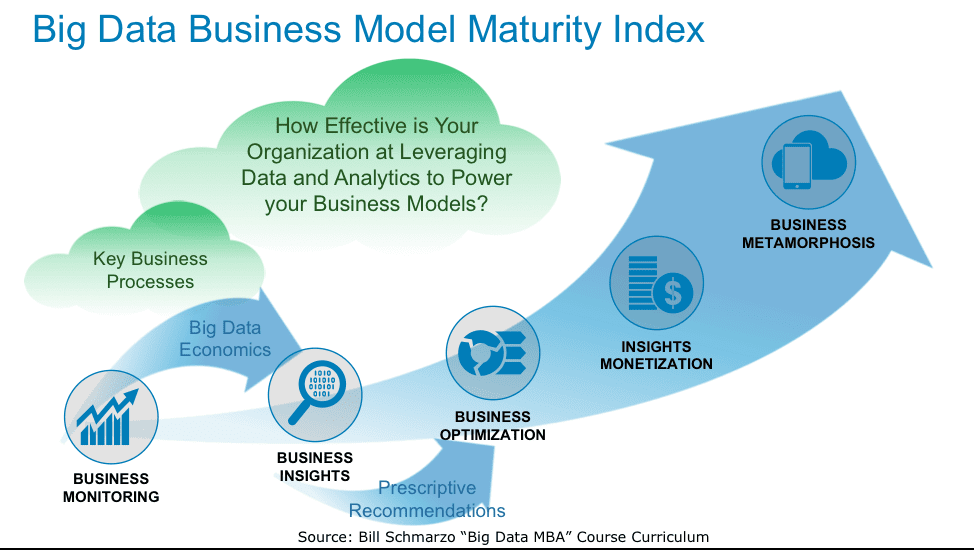
Figure 1: Big Data Business Model Maturity Index
Becoming more effective at leveraging data and analytics is forcing organizations to move beyond the world of Business Intelligence (BI) to embrace the world of predictive and prescriptive analytics. Business Intelligence is about descriptive analytics: retrospective analysis that provides a rearview mirror view on the business—reporting on what happened and what is currently happening. Predictive analytics is forward-looking analysis: providing future-looking insights on the business—predicting what is likely to happen (associated with a probability) and what one should do (see Figure 2).
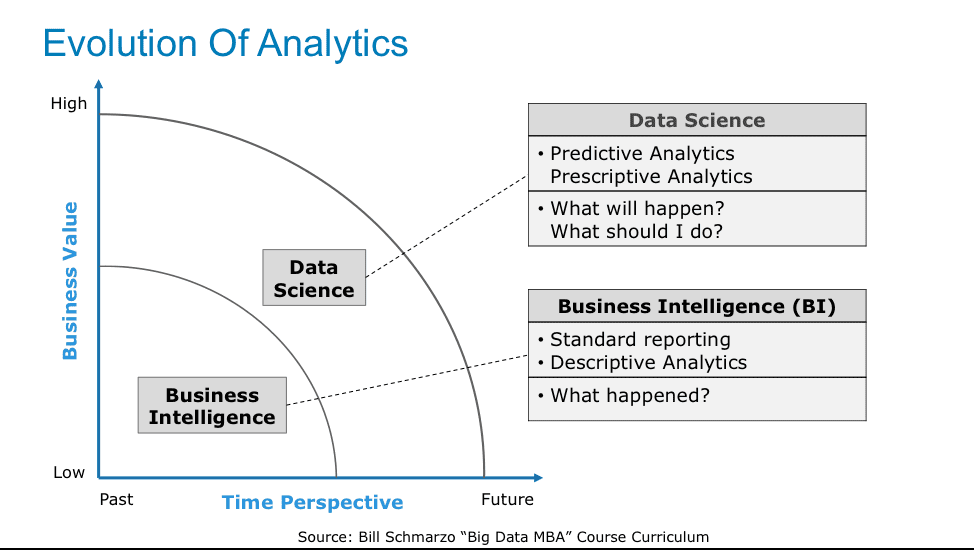
Figure 2: Evolution of Analytics from Business Intelligence to Data Science
There is a natural organizational analytics maturation in moving from BI to Predictive Analytics and Prescriptive Actions (see Figure 3):
- Descriptive Questions: Use Business Intelligence and data warehousing to support management and operational reporting, and dashboards using aggregated data. Descriptive analytics answers the question: “What has happened?”
- Predictive Analytics: Use statistical models to quantify cause-and-effect to predict what is likely to happen or how someone is likely to react (i.e., a consumer’s FICO credit score predicting likelihood to repay a loan). Predictive Analytics answers the question: “What is likely to happen?”
- Prescriptive Actions: Use optimization algorithms to prescribe actions to improve human decision-making around outcomes. Prescriptive Analytics answers the question: “What should we do?”
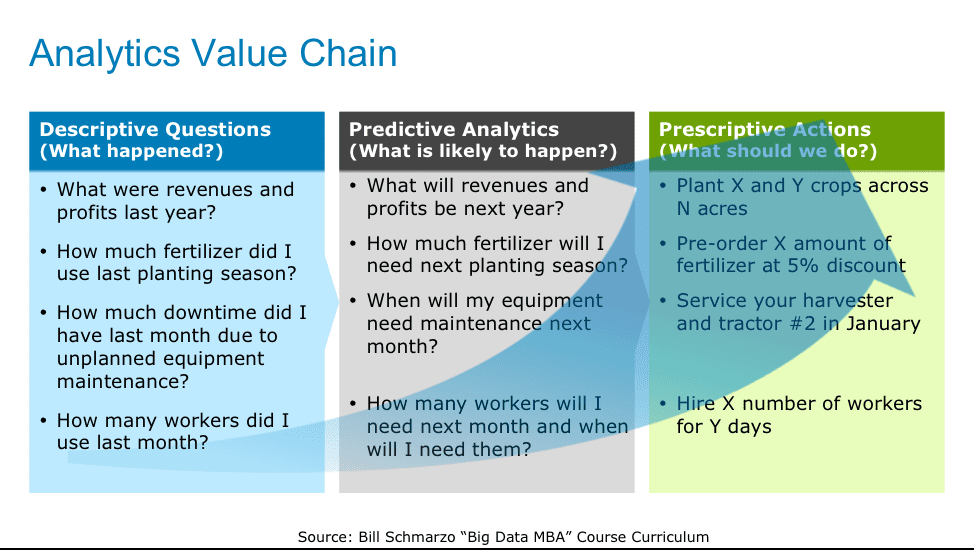
Figure 3: Analytics Maturation
The Analytics Chasm
Unfortunately, with many companies with whom I talk and teach, there is an “analytics chasm” that is hindering the transition from descriptive questions to predictive analytic and prescriptive actions. This chasm is preventing organizations from fully exploiting the potential of data and analytics to power the organization’s business and operational models (see Figure 4).
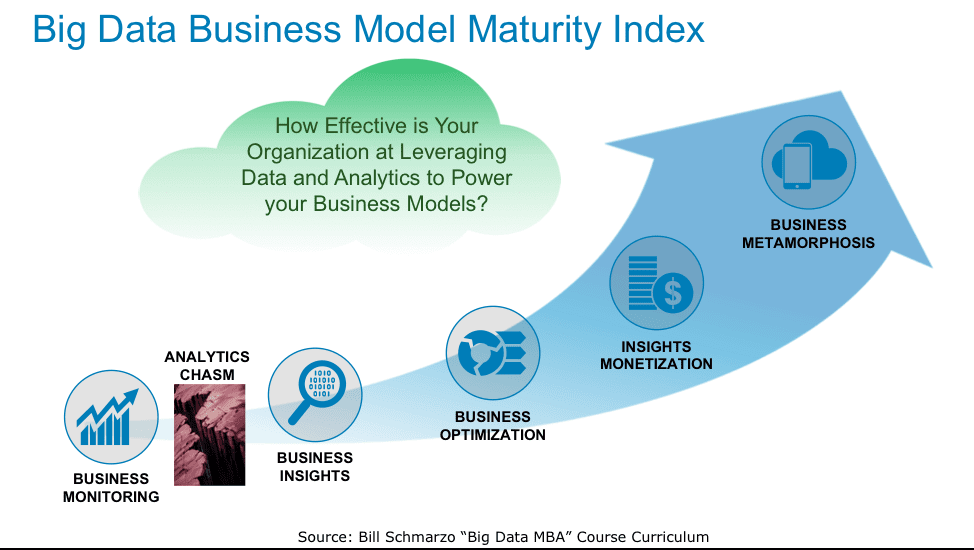
Figure 4: Analytics Chasm
Organizations think that crossing the Analytics Chasm is a technology issue, so they throw technology at the problem (and consequently right down the bottomless technology chasm). Forever in search of the technology “silver bullet” (the newest technology that magically solves the Analytics Chasm challenge), IT organizations continue to buy new technologies (or continue to invest in outdated technologies) without a good understanding how what it takes to cross the Analytics Chasm.
And the answer to the Analytics Chasm challenge? Economics!
Crossing the Analytics Chasm
Yes! The key to crossing the Analytics chasm is understanding and mastering the economic value of big data; being able to exploit the potential of big data and data science to create new sources of value creation.
Economics is the branch of knowledge concerned with the production, consumption, and transfer of wealth.
Crossing the Analytics Chasm requires an understanding of economics and how the organization can leverage digital economics to identify and capture the new sources of customer and market value creation. Crossing the Analytics Chasm requires (see Figure 5):
- Transitioning from an organizational mentality of using data and analytics to monitor the business to predicting what’s likely to happen and prescribing actions to prevent or monetize that prediction
- Maturing beyond aggregating data in order to control the costs of storage and data management to a mentality of hording every bit of detailed historical data, complemented with a wealth of external data sources (social media, weather, local events, economic, demographic) about every customer, employee (physician, teacher, engineer, technician, mechanic), product, device and asset
- Expanding data access from a restrictive data access model (because it’s easier to walk on the sun than to add a new data source to your data warehouse) to enabling access to all data – internal or external – that might have value given the business and operational decisions the organization is trying to optimize
- Transitioning from batch data processing (and praying that your ETL programs can meet the SLA windows) to an operational model that can process and analyze the data in real-time or near real-time in order to “catch the business in the act” so as to create new monetization and prevention opportunities
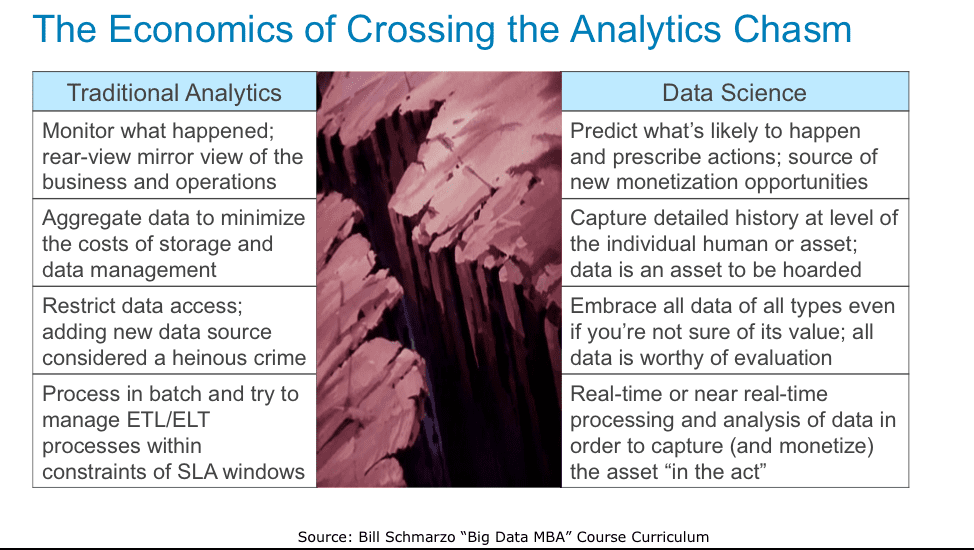
Figure 5: The Economics of Big Data
As we discovered in our Economic Value of Data (EVD) research at the University of San Francisco, leading organizations are embracing the economic value of big data to leapover the Analytics Chasm. These organizations are exploiting the economic value of data to optimize key business and operational processes, mitigate compliance and cybersecurity risks, uncover new monetization opportunities, and create a more compelling, differentiated customer experience.
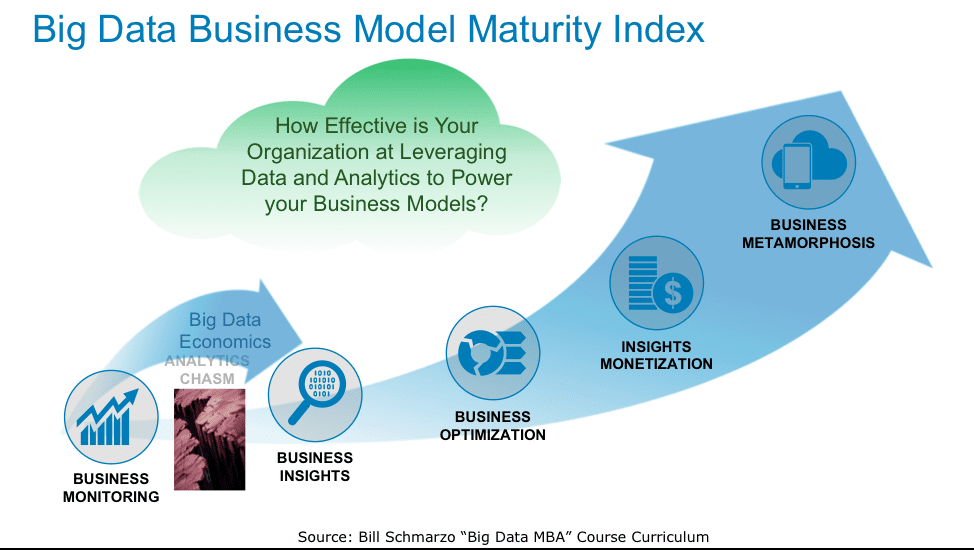
Figure 6: Crossing the Analytics Chasm to Achieve Big Data Business Model Maturity
